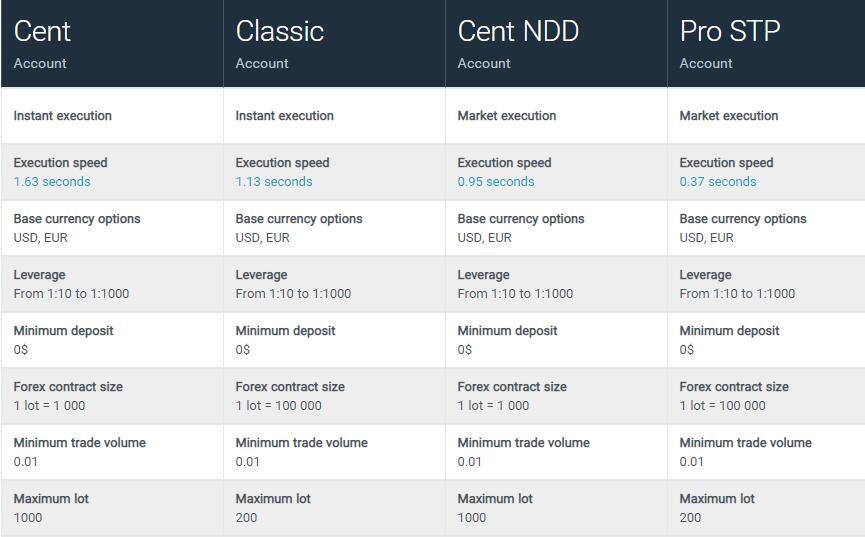Net Income After Taxes NIAT: Definition, Calculation, Example

All cells with blue font and light grey shading can be used to enter your own numbers. Again, these guidelines vary widely by industry and company size, and can be impacted by a variety of other factors. As you can see in the above example, the difference between gross vs net is quite large. The net margin, by contrast, is only 14.8%, the sum of $12,124 of net income divided by $82,108 in revenue. In other cases, a low net profit margin might mirror a price war that’s bringing profits down.
Pet care stocks go to the dogs after CMA shock – Investors Chronicle
Pet care stocks go to the dogs after CMA shock.
Posted: Thu, 07 Sep 2023 11:06:28 GMT [source]
It should be used in conjunction with other performance measures to arrive at a more accurate measure of the business’s operational effectiveness and efficiency. Some firms, especially retailers, discount hotels, and chain restaurants, are known for their low-cost, high-volume approach. Profit margins https://online-accounting.net/ can vary by sector and industry, but the outcome is the same. The higher a firm’s net profit margin is compared to its competitors, the better for the business. A company with negative net income–or losses–can also be because it’s a start-up firm, which may see years before the company turns a profit.
The gross margin only considers the cost of sales, while the operating margin only considers the cost of sales and operating expenses. To calculate a business’s after-tax profit margin, we simply calculate the net income by the gross or net revenue. The business can also compare its current period after-tax profit margin with the targeted margin to see if it was able to hit its target. A business can compare its current after-tax profit margin with one of its previous periods to see if maintaining its control of costs or improving it. When the growth of net income is disproportionate to sales growth, the after-tax profit margin will change.
Profit Margin Example
This ratio matters because it shows how good a company is at converting revenue into profits. Net profit margin is one of the most important indicators of a company’s financial health. By tracking increases and decreases in its net profit margin, a company can assess whether current practices are working and forecast profits based on revenues. The Pre-Tax Profit Margin measures the remaining earnings once all operating and non-operating expenses, except for taxes, have been deducted.
- In circumstances where the company earns a new dollar for each dollar invested in it, the ROTA is said to be one, or 100 percent.
- As you can see from the image, the Excel file allows you to input various assumptions over a five year period.
- As you can see from the screenshot, if you enter a company’s revenue, cost of goods sold, and other operating expenses you will automatically get margins for Gross Profit, EBITDA, and Net Profit.
- The after-tax profit margin of a company is not static, this is due to the fact that the net income and net sales of the company can increase o otherwise.
Operating margin further takes into account all operating costs but still excludes any non-operating costs. The after-tax profit margin is calculated by dividing net income by net sales. Hence, if the net income of Company A is $400,000 and the net sales $600,000, the after-tax profit margin is; $400,000/$600,000. The after-tax profit margin of a company is not static, this is due to the fact that the net income and net sales of the company can increase o otherwise.
Pre-Tax Profit Margin Calculation Example
The calculation of earnings before taxes is from subtracting the operating and interest costs from the gross profit ($100,000 – $60,000). EZ Supply has pretax earnings of $40,000, and total sales of $500,000 for the given fiscal year (FY). The pretax profit margin is calculated by dividing pretax earnings by sales, resulting in a ratio of 8%.
- This guide will cover formulas and examples, and even provide an Excel template you can use to calculate the numbers on your own.
- All content on this website, including dictionary, thesaurus, literature, geography, and other reference data is for informational purposes only.
- Along with other metrics, the net margin is used to make data-based decisions about how effectively a company uses its revenue.
- Learn more about the standards we follow in producing Accurate, Unbiased and Researched Content in our editorial policy.
- It’s best to utilize several ratios and financial metrics when analyzing a company.
Each industry has different profit margins, so it is important to consider all possible factors when evaluating the net margins of different companies. When used correctly, pretax profit margins can provide a useful gauge of business efficiency. However, to get a complete grasp of a company’s health, investors are always advised to use the pretax profit margin in tandem with other metrics. The more you know about a company the better you can establish whether it is worth investing in. Companies across the globe strive to generate as much profit as possible.
How Pretax Profit Margin Works
Finding a company’s net profit margin reveals how much after-tax profit it keeps for every dollar it earns in revenue or sales. By calculating the net profit margin, you’ll find the percentage of profit a business gets from the total amount it brings in. To calculate a company’s after-tax profit margin, you’ll need to divide the company’s net income by net sales. One of the advantages of amortized cost the after-tax profit margin benefits is that it shows how well a company is controlling its costs. A surge in a company’s net income after taxes can be due to a lower tax rate or favorable tax treatment. Investors should crosscheck increases in NIAT with pre-tax income to ensure that the additional profit is due to increases in revenue and not merely a tax windfall.
Instead, the cash flow statement is the reference to how much cash a company generates over a period. Here, we can gather all of the information we need to plug into the net profit margin equation. We take the total revenue of $6,400 and deduct variable costs of $1,700 as well as fixed costs of $350 to arrive at a net income of $4,350 for the period. If Jazz Music Shop also had to pay interest and taxes, that too would have been deducted from revenues. The net profit margin, or simply net margin, measures how much net income or profit is generated as a percentage of revenue. The pre-tax profit margin ratio compares a company’s earnings before taxes (EBT) to its revenue in the corresponding period.
Investors can use these ratios to compare after-tax profit margins among a group of companies. This analysis helps shareholders to see which business among a group of similar companies is most effective at converting sales into profits. Net margin measures how much net income or profit is generated as a percentage of the company’s revenue.
A company’s net income is its total income minus taxes, expenses, and cost of goods sold (COGS). Sometimes, this is called “the bottom line” because it’s usually displayed as the last or bottom line on an income statement. Net income after taxes (NIAT) is the net income of a business less all taxes. In other words, NIAT is the sum of all revenues generated from the sale of the company’s products and services minus the costs to run it. Also, retail companies often use the term net revenue or net sales, because they often have returned merchandise by customers. The total amount of rebates to customers from returns is deducted from the revenue total for the period.
How to Find the Net Profit Margin
To boost profitability, management teams must strike a balance between increasing sales and reducing costs. Pretax profit margins give us an indicator of how successful companies are at achieving this goal. As a result, they are closely watched by analysts and investors and frequently referred to in financial statements. It’s best to utilize several ratios and financial metrics when analyzing a company. Net profit margin is typically used in financial analysis along with gross profit margin and operating profit margin. In addition to providing analysts with a measure of core operating efficiency without the influence of debt, mergers, and acquisitions analysts use net operating profit after tax.

For instance, the term profit may emerge in the context of gross profit and operating profit. As you can see from the screenshot, if you enter a company’s revenue, cost of goods sold, and other operating expenses you will automatically get margins for Gross Profit, EBITDA, and Net Profit. EBIT (earnings before interest and taxes) is the same thing as Operating Profit; EBITDA is slightly more refined, closer to Net Profit.
Profit Margin Template
However, with other performance measures, it can accurately depict the overall health of a company. Unearned revenue accounts for money prepaid by a customer for goods or services that have not been delivered. Companies are also usually mindful of operating expenses, and these costs are the expenses that a company incurs to run its business. If a company can reduce its operating expenses, it can increase its profits without having to sell any additional goods.
Secureworks® Announces Second Quarter Fiscal 2024 Results … – PR Newswire
Secureworks® Announces Second Quarter Fiscal 2024 Results ….
Posted: Thu, 07 Sep 2023 11:00:00 GMT [source]
In its latest ended accounting period, your business was able to generate a net income of $25,000 from its net revenue of $50,000. Lastly, the business may compare its after-tax profit margin with another business that is within the same industry to see how relatively well it’s doing in controlling costs. Key metrics are often ones where a company’s performance – as indicated by the metric – is substantially different (whether better or worse) from that of most of its competitors. By considering the above factors along with the profitability margins covered in this article, you’ll be well on your way to performing complete financial analyses. An after-tax profit margin is one of the most closely followed numbers in finance.
Alternatively, the present tax expense may be much lower than it had been in earlier years due to tax credits, deductions, and tax breaks. In this case, analysts may be able to decrease earnings volatility by calculating the pretax profit margin. When analyzing a company a good analyst will look at a wide range of ratios, financial metrics, and other measures of performance. Below is a list of commonly used performance metrics that analysts often consider in order to compile a complete and thorough analysis of a business. Net income after taxes is one of the most analyzed figures on a company’s financial statements.
Often, profit margins after taxes gains more prominence among analysts and investors. However, it can be argued that tax payments offer little insight into the efficiency of companies and should, therefore, be stripped out of the equation. Both measures are primarily used by analysts looking for acquisition targets since the acquirer’s financing will replace the current financing arrangement.
